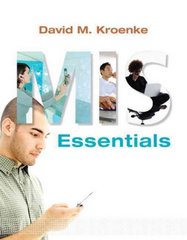Question
Imagine that you are two years into your community risk reduction (CRR) plan, about weed abatement; the data is showing unchanged risk levels, requiring major
Imagine that you are two years into your community risk reduction (CRR) plan, about weed abatement; the data is showing unchanged risk levels, requiring major plan modifications. Thinking about the plan that you developed in this course, what are two ways you can address the issues with community leaders to maintain buy-in and keep everyone committed to the plan? Below is your current plan
Developing a Community Risk Reduction (CRR) plan for weed abatement using grazing goats and traditional methods requires a systematic approach to monitoring and evaluating the plan's effectiveness. Overall, the program covers all the essential components necessary for monitoring and assessing a Community Risk Reduction (CRR) plan for weed abatement in the context of Wildland fires. It provides a clear timeline for reviews, specifies the criteria and rating system for measuring achievement, identifies the data sources for measurement, and outlines the roles and responsibilities for data collection and analysis. By following this plan, stakeholders can effectively monitor and evaluate the progress of the CRR plan, make informed adjustments based on data analysis and feedback, and ensure continuous improvement in weed abatement efforts to mitigate Wildland fire risks in the district.
Timeline of Reviews:
- Initial Review: Conducted one month after the implementation of the CRR plan.
- Ongoing Reviews: Conducted quarterly after that.
- Annual Review: Conducted once a year to assess the plan's overall effectiveness.
Criteria for Review:
- Effectiveness of Weed Abatement: Evaluate the reduction in weed growth and the overall improvement in community safety and aesthetics.
- Goat Grazing Performance: Assess the grazing efficiency and the ability of goats to target and remove specific weed species.
- Traditional Weed Abatement Methods: Review the effectiveness of conventional methods, such as mowing, herbicide application, or manual removal.
- Compliance with Regulations: Ensure adherence to local or regional regulations regarding weed abatement practices.
- Criteria for Review: Evaluate benchmarks related to weed abatement efforts, such as area coverage, invasive species control, and firebreak maintenance. - Rating System: Use a rating scale (e.g., 1-5) to measure the achievement of each benchmark. Clearly define what each rating level signifies.
Data Collection for Benchmark Measurement:
- Weed Abatement Effectiveness: Measure the percentage reduction in weed coverage in designated areas using visual inspections and aerial photography.
- Goat Grazing Performance: Record the grazing capacity and the number of weeds consumed by goats in a specific period.
- Traditional Weed Abatement Methods: Document the frequency and efficiency of conventional methods, such as mowing schedules or herbicide application records.
- Compliance with Regulations: Maintain records of permits, licenses, or regulatory requirements for weed abatement activities.
Data Collection and Analysis Responsibility:
- The Fire Prevention Officer or a designated team member will be responsible for collecting the necessary data.
- The Fire Prevention Officer will perform data analysis.
Review of Data Analysis:
- The accuracy and completeness of data analysis will be reviewed by a senior member of the CRR plan team or an independent auditor.
Contingency Plans for Unmet Benchmarks:
- Identify potential reasons for unmet benchmarks, such as unfavorable weather conditions or inadequate resource allocation.
- Implement corrective actions, such as adjusting grazing schedules, increasing the frequency of traditional weed abatement methods, or exploring additional weed management strategies.
- Reevaluate the benchmarks and establish new, realistic targets if necessary.
- - Identify the reasons for not achieving benchmarks, such as resource constraints, weather conditions, or inadequate implementation. - Develop alternative strategies or actions to address the identified issues promptly. - Allocate additional resources, modify tactics, or seek partnerships to overcome challenges.
Frequency of Plan Evaluation Meetings:
- The district and stakeholders (team members) should meet quarterly to evaluate the progress of the CRR plan and discuss any emerging issues.
- Annual meetings should be held to conduct a comprehensive review and make strategic decisions for the upcoming year.
Communication and Training for Plan Modifications:
- Changes to the plan should be communicated to all team members through regular meetings, email updates, or a dedicated communication platform.
- If additional training is required due to plan modifications, relevant team members should be identified, and suitable training sessions should be organized.
Evaluation of Plan Modifications:
- Monitor the implementation of plan modifications and gather feedback from team members.
- Assess the impact of the modifications on weed abatement effectiveness, cost-efficiency, and compliance with regulations.
- Compare the results with the benchmarks and adjust them accordingly, if needed.
By following this monitoring and evaluation plan, we will be able to assess the progress of our CRR plan for weed abatement, identify areas for improvement, and make informed decisions to ensure the plan's success.
Step by Step Solution
There are 3 Steps involved in it
Step: 1

Get Instant Access to Expert-Tailored Solutions
See step-by-step solutions with expert insights and AI powered tools for academic success
Step: 2

Step: 3

Ace Your Homework with AI
Get the answers you need in no time with our AI-driven, step-by-step assistance
Get Started


